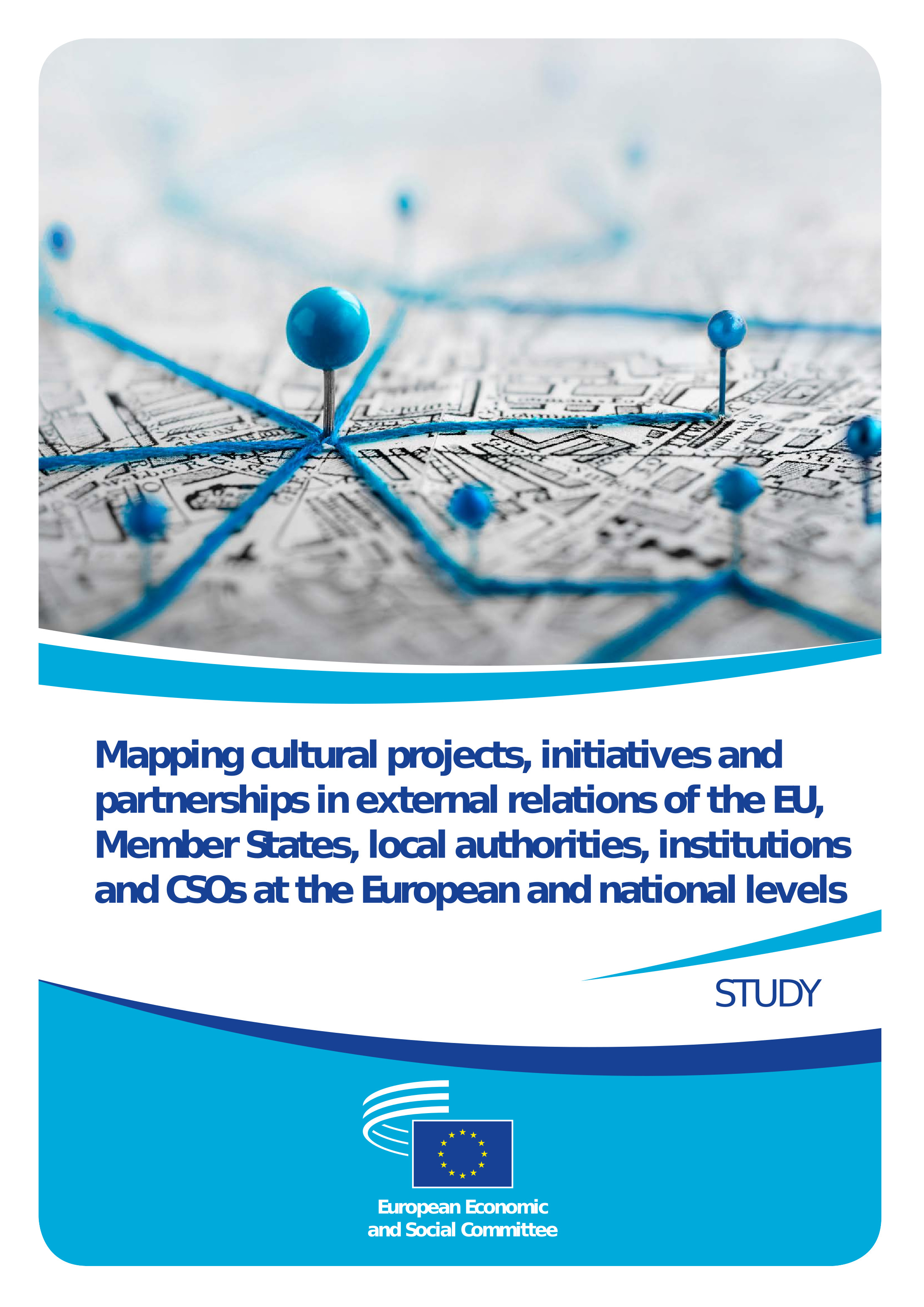Our report on the cultural relations of the EU commissioned by the European Economic and Social Committee has been published


The study “Mapping cultural projects, initiatives and partnerships in external relations of the EU, Member States, local authorities, institutions and CSOs at the European and national levels” delivered by Research, Analysis and Strategy Institute to the European Economic and Social Committee has just been released.
The study is based on extensive field work which resulted in generating a database with 395 entries. The database includes feedback received from survey conducted with EU institutions, the 27 Member States, sample of local authorities and other relevant entities (such as museums, universities). Representatives of the large range of European and national CSOs active in the field were consulted as well. Project references identified via desk research were also considered in the database.
A key finding is that the cultural projection of the EU has a balanced structure covering almost equally all various cultural domains: audio - visual and interactive media projects (16%), followed by books and press (13%), cultural and natural heritage (13%), performance and celebration (12%), intangible cultural heritage (10%), visual arts and crafts (9%), tourism (chartered travel) (7%), design and visual arts (6%), sports (4%), others (11%). There is a difference in terms of predominance of cultural domains covered when it comes only to projects managed directly by the institutions of the EU. The EU institutions manage mostly audio-visual projects (45%), followed by projects in the field of books and press (28%). The projection of Europe is orientated predominantly towards the candidate countries (20%), followed by Africa (16%), Eastern partnership (12%), the UK (10%). The majority of the activities identified are with a relatively small value between EUR 100 000 and EUR 500 000 (41%) and under EUR 100 000 (26%).
Among all actors the EU is the leader in terms of number of projects financed. In total 65% of the projects are directly financed by the Union. In this study we argue that the internal synergies within the EU bodies involved should be improved in order to optimize the tracking of the various initiatives in the field.
The EEAS and the EESC should build a Joint data collection hub on the EU’s external cultural relations aggregating data from the pre-existing interinstitutional infrastructure in the field: EU delegations, EUNIC, Cultural relations platform and others. The hub should be in charge of structuring the data and updating a permanent database. In the body of this report, we suggest a structure for the database which should cover 15 main topics. An automated link between the application for EU funding and the database should be established. Automated monitoring of websites can be considered too, generative AI can be utilized for processing the abstracts of the projects and referencing them.
An interinstitutional information campaign should invite additional international, national and subnational state and non-state actors (in addition to the systematic aggregation of data from the pre-existing structures) to provide input to the database. The database should be structured and published by the hub. The name of the campaign should be targeting relevant audience (s) with key words such as “People to people active cultural hub Europe”. The data collection methods and standards need to be adapted and brought in line with the administrative traditions and the constitutive norms in each Member State.
The study is available on this link.